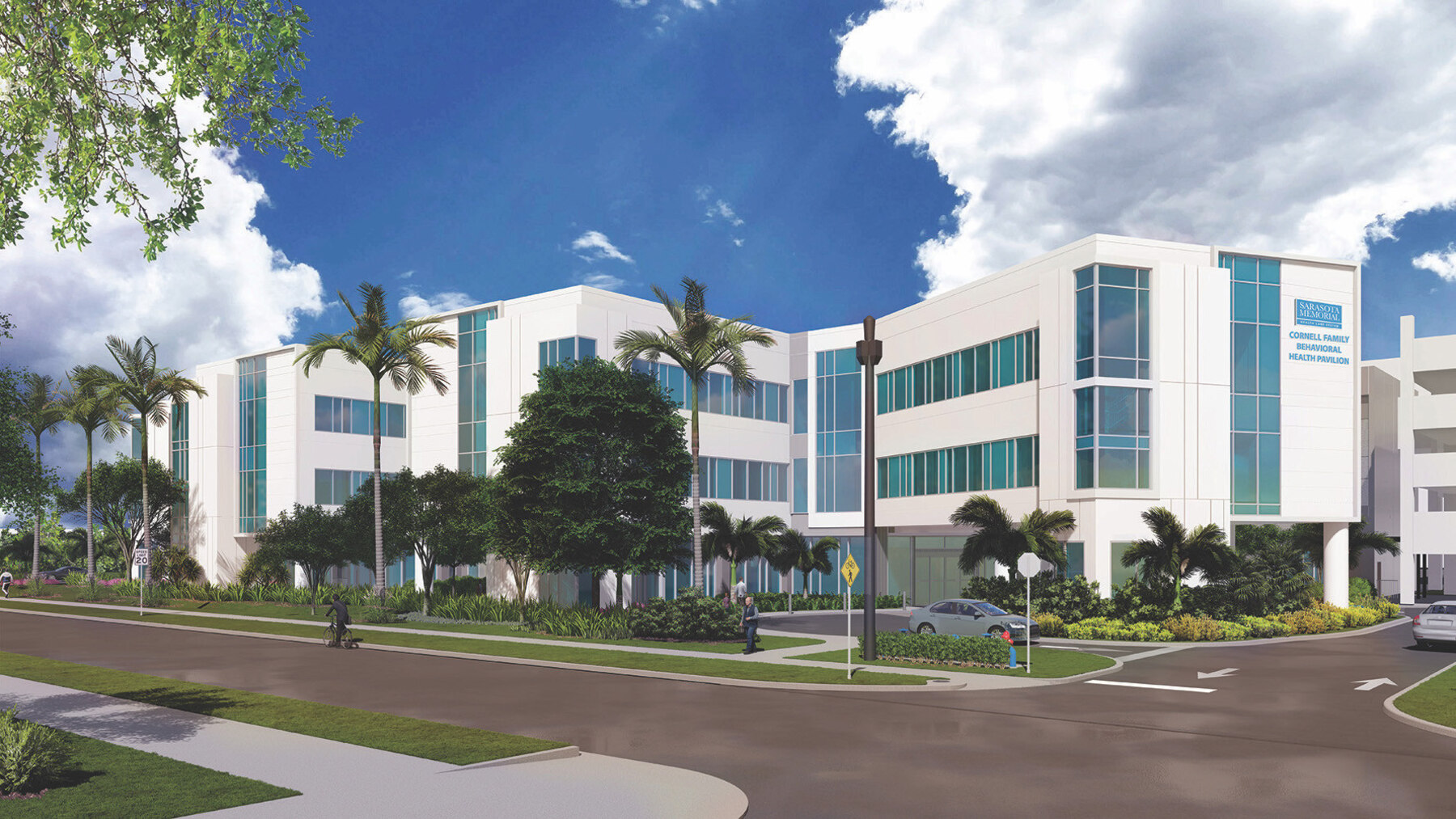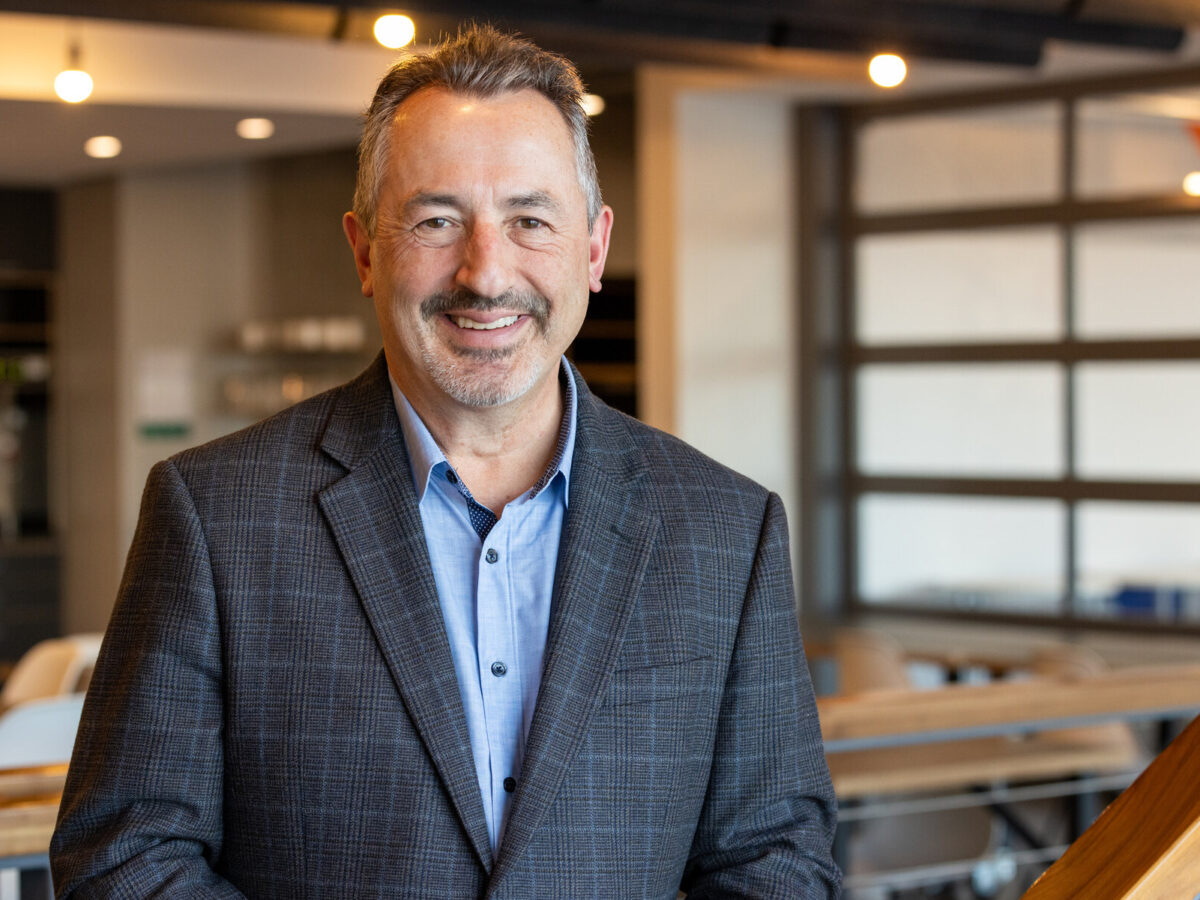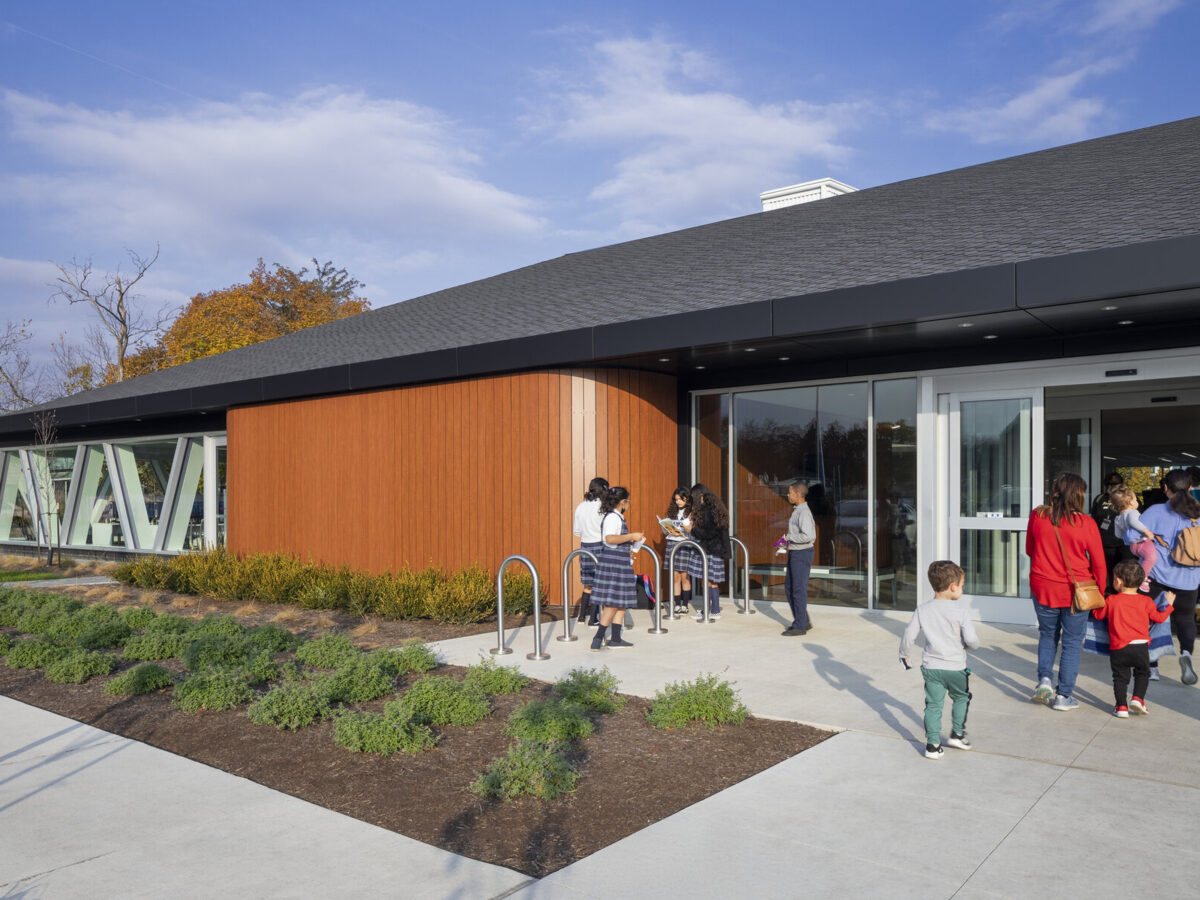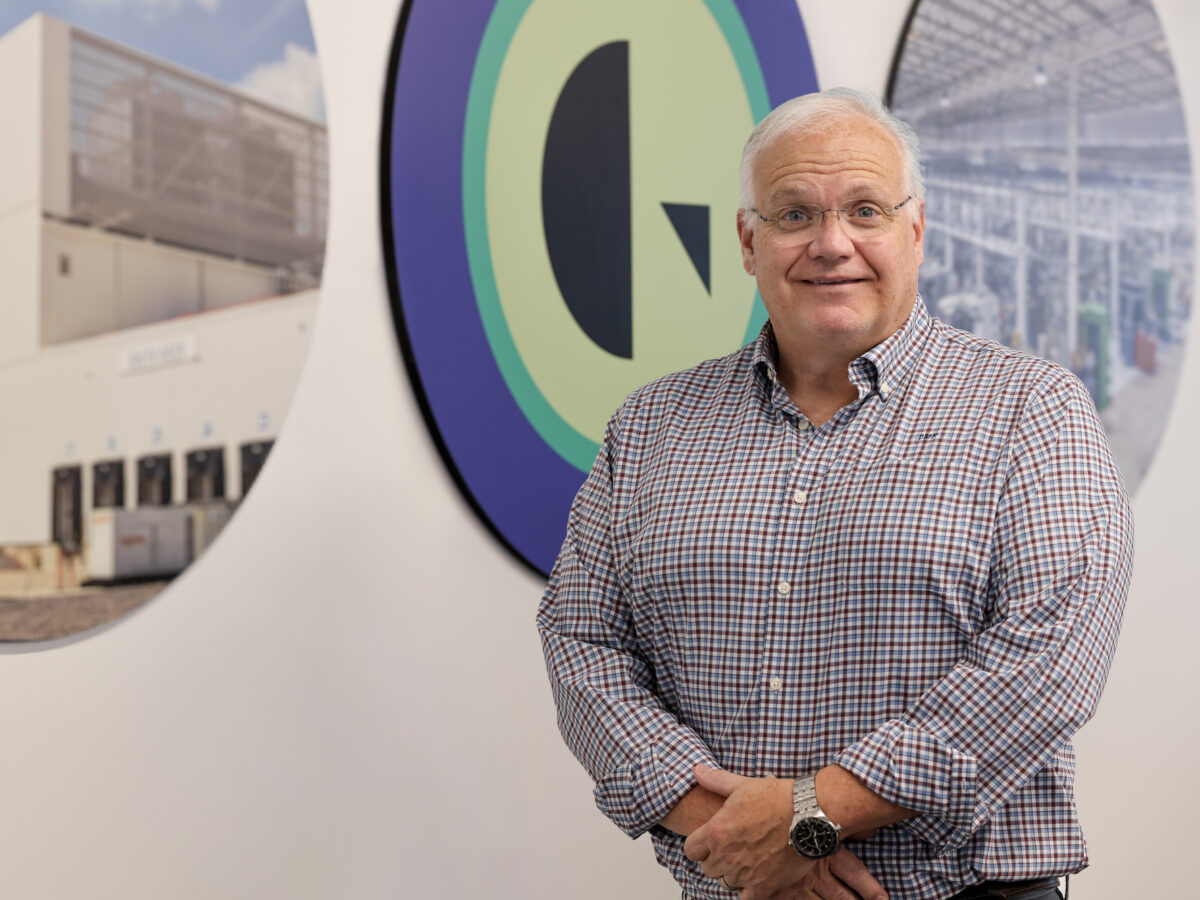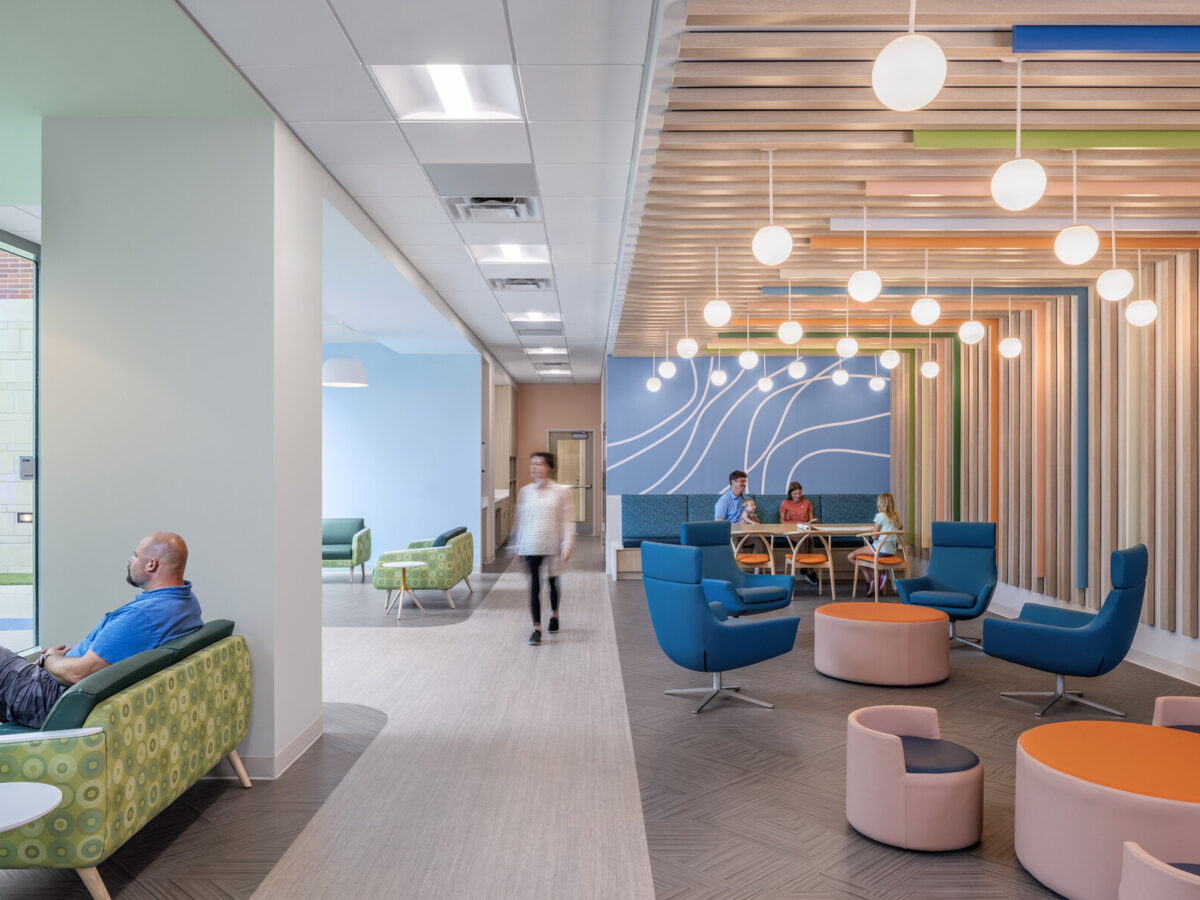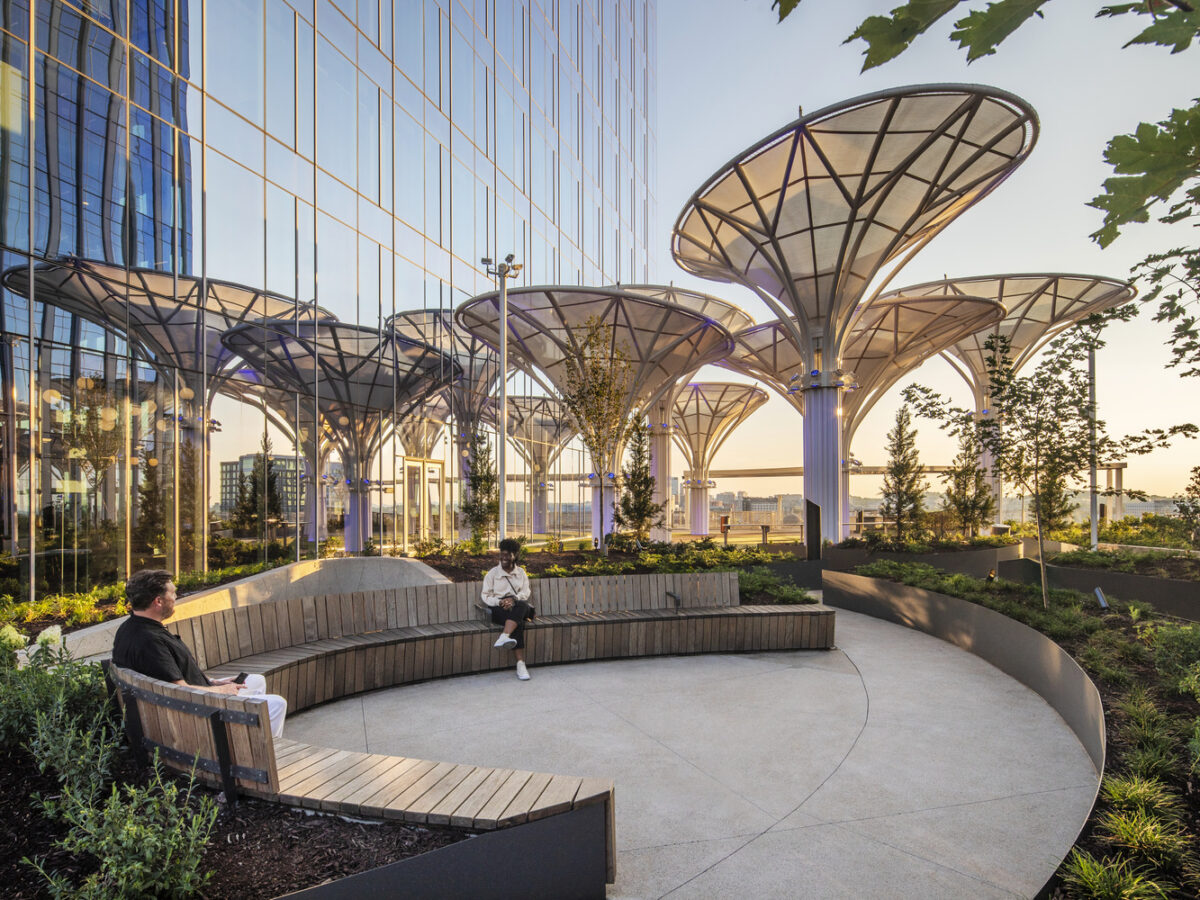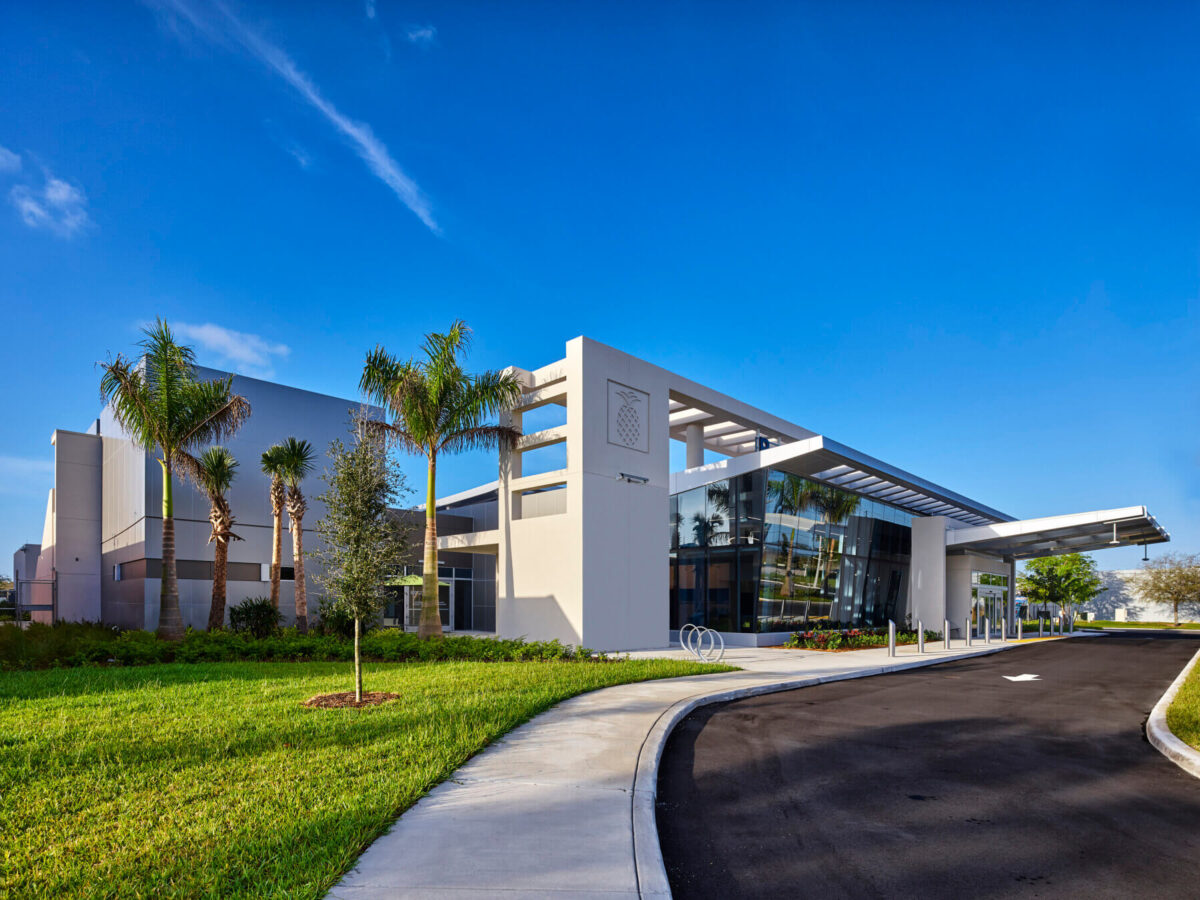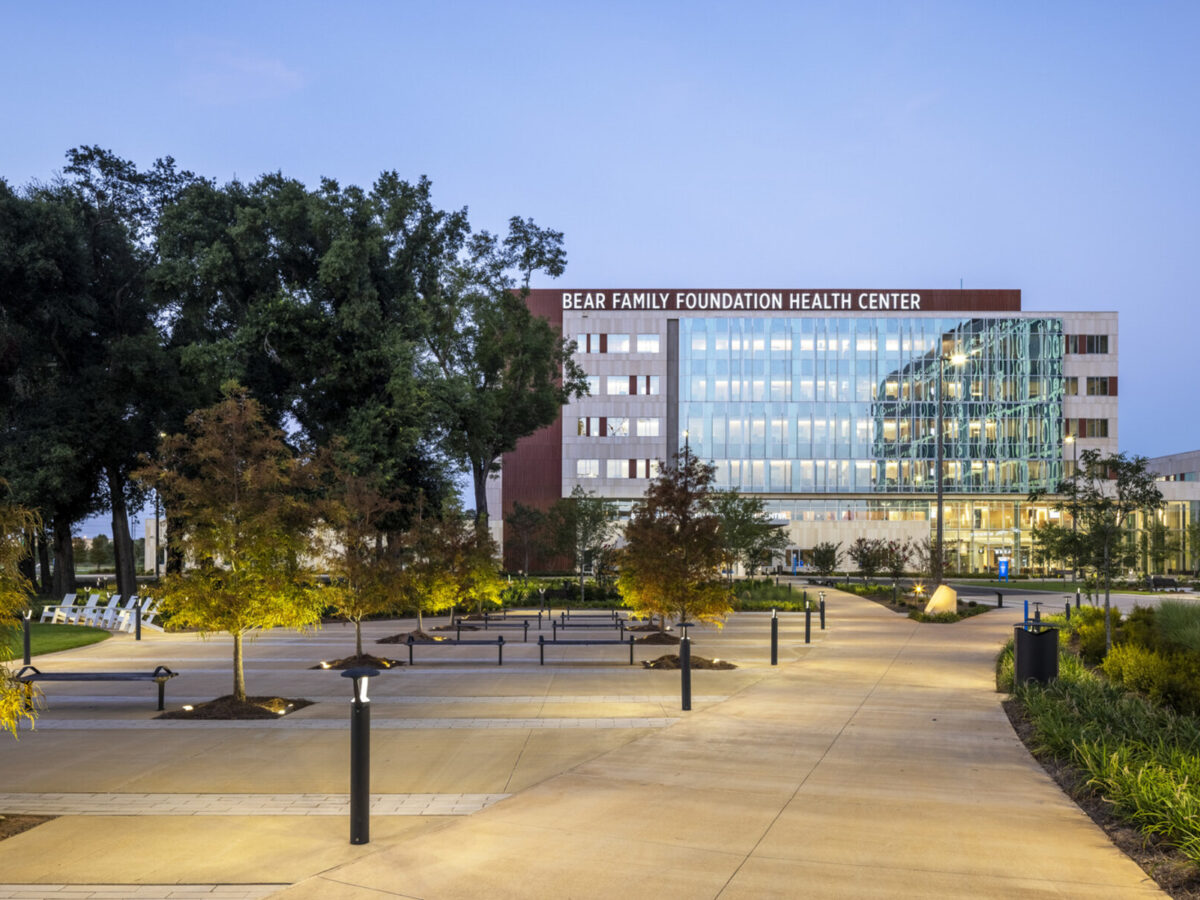Serving four highly populated counties in southern Florida, Sarasota Memorial Health Care System (SMH) is a leading healthcare provider for those with mental health-related illnesses. When it came time to renovate their behavioral health pavilion, SMH sought to completely reimagine their strategy and comprehensive approach to behavioral health care. With SMH’s vision to provide a revolutionary healing and therapeutic environment in mind, Gresham Smith had the honor of redesigning their facility, placing a focus on how SMH could prioritize the patient journey.
However, our team of architects knew that this project was about more than just delivering a state-of-the-art facility. Florida is among the states with the highest prevalence of mental illness, and the number of people seeking care increased further during the pandemic. Given these statistics, the hospital sought to evolve its behavioral health support programs to accommodate the increase in staff, resources, and coverage operations that are required to effectively support those who are suffering.
So, how do you design a facility that is equally focused on delivering the best for its patients while also maintaining the highest level of safety for staff? With some genuine ingenuity, an innovative, humane design approach and an investment in high-quality solutions.
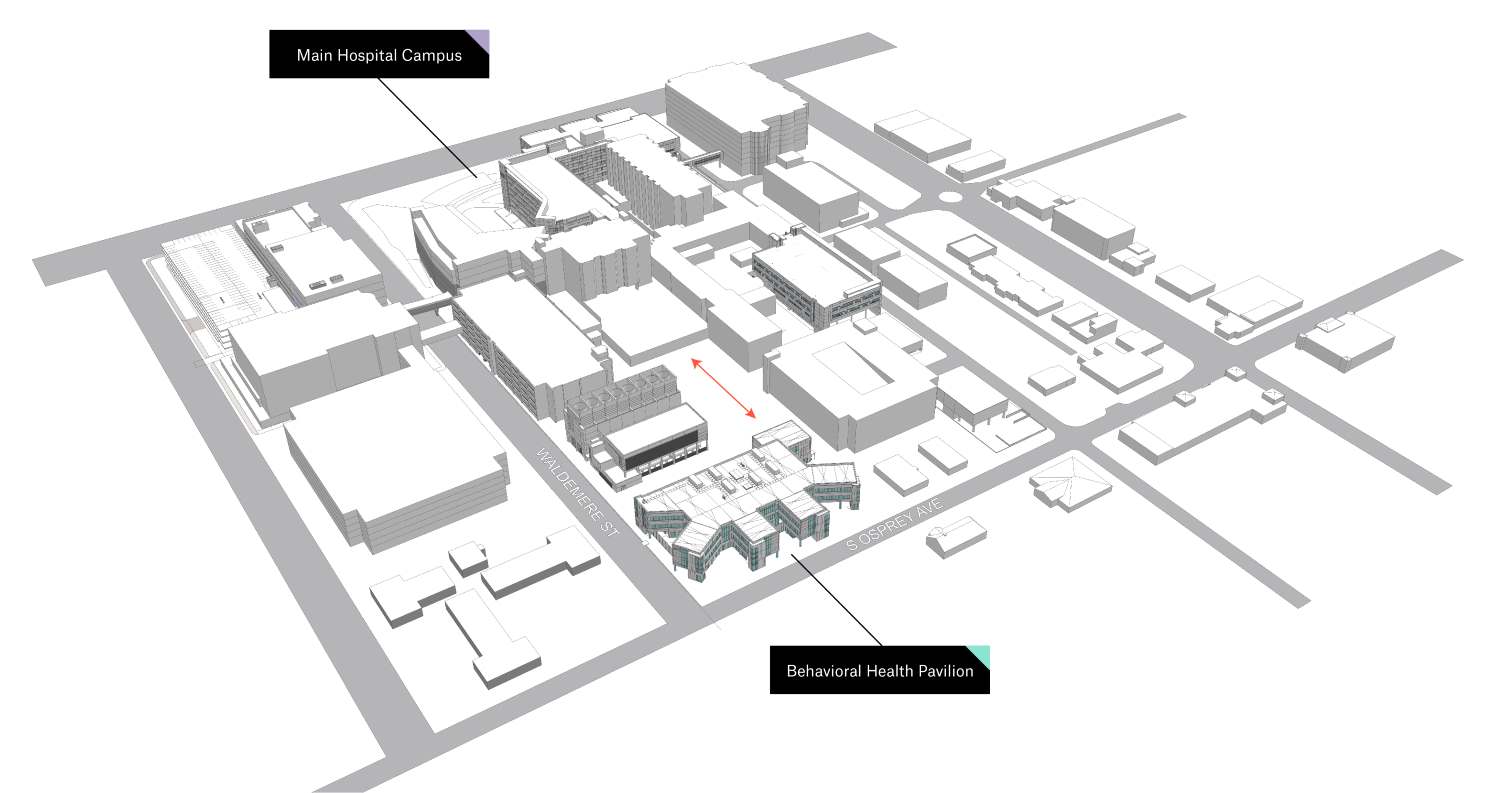
Originally, SMH’s behavioral health services—inpatient, partial hospitalization, intensive outpatient and counseling programs—were located in various buildings, with some separated from the Sarasota medical campus by busy thoroughfares. When establishing goals for their new space, the hospital wanted to locate the new facility closer to the hospital on the Sarasota campus.
Despite tough zoning restrictions that limited the height and area of the unit, and the preexisting regulations for areas divided by building codes, our team found a way to use a vertical floor plan and optimize every inch of space. Through smart planning, we were able to give each floor a designated purpose—the inpatient floors are higher up, while outpatient services are located on the ground floor. This also helped create an inherent flow of circulation in the building for different staff members and material deliveries.
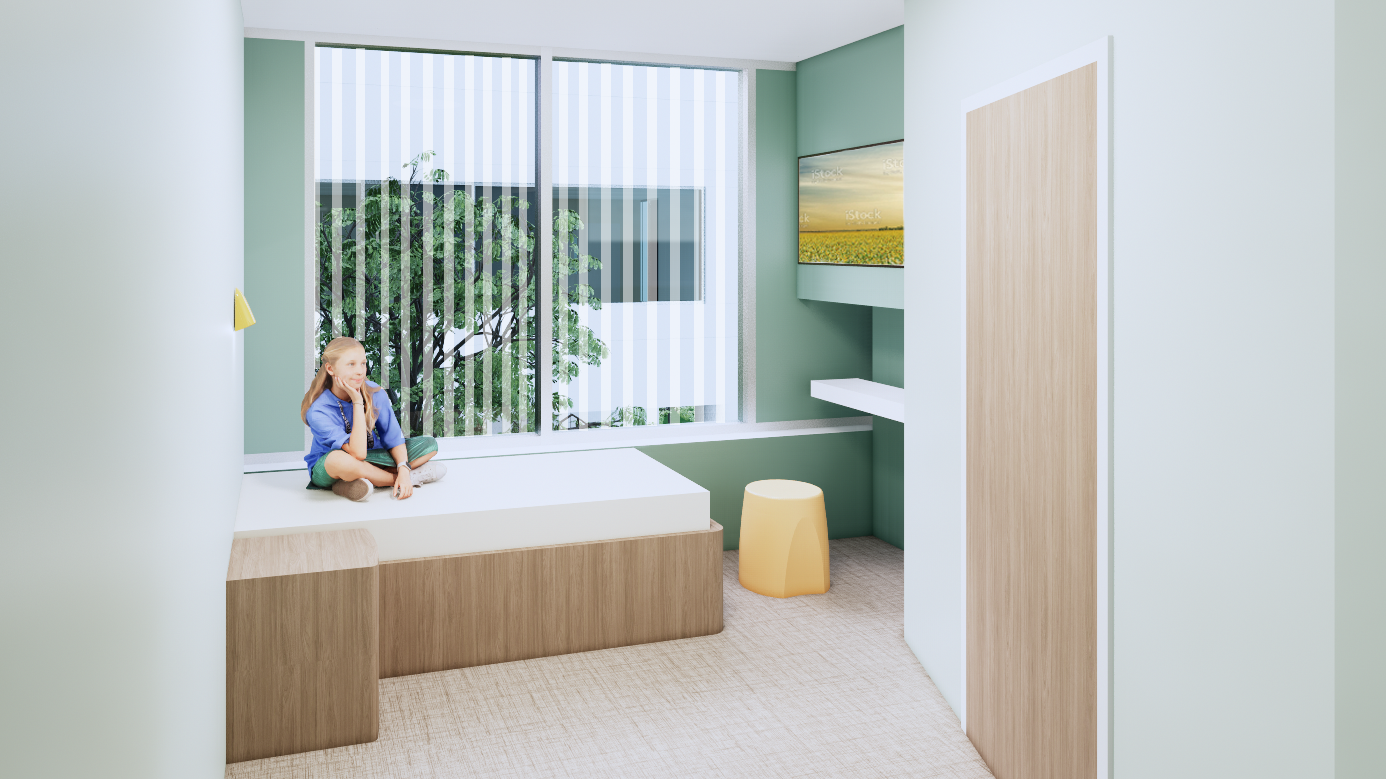
Healing With Nature: Letting the Light In
Sarasota Memorial made it clear that they wanted to increase patients’ access to sunlight, and we took it one step further than just expanding the size of the windows. As we looked at the structure of the building, we recognized that we could increase the ceiling height, which would also allow us to increase the window height. This made it possible for more natural light to enter the rooms and reach deeper into the space.
Additionally, we used as many glass partitions as possible on the interior walls, allowing light into the entire space, making it feel more open, and enhancing sightlines.
Since patients on the upper levels won’t have immediate access to the patio on the ground level, they will be able to access a strategically located porch on their floor. When constructed, these porches will include a special screen material that will help maintain the highest level of patient safety, while also increasing ventilation and filtering the air. To further bring the outside in, we added artificial grass to the porches, which will be easy to clean and will provide a safe surface for patients. The program also includes community-based outdoor spaces, such as an outdoor gym and a large outdoor patio.
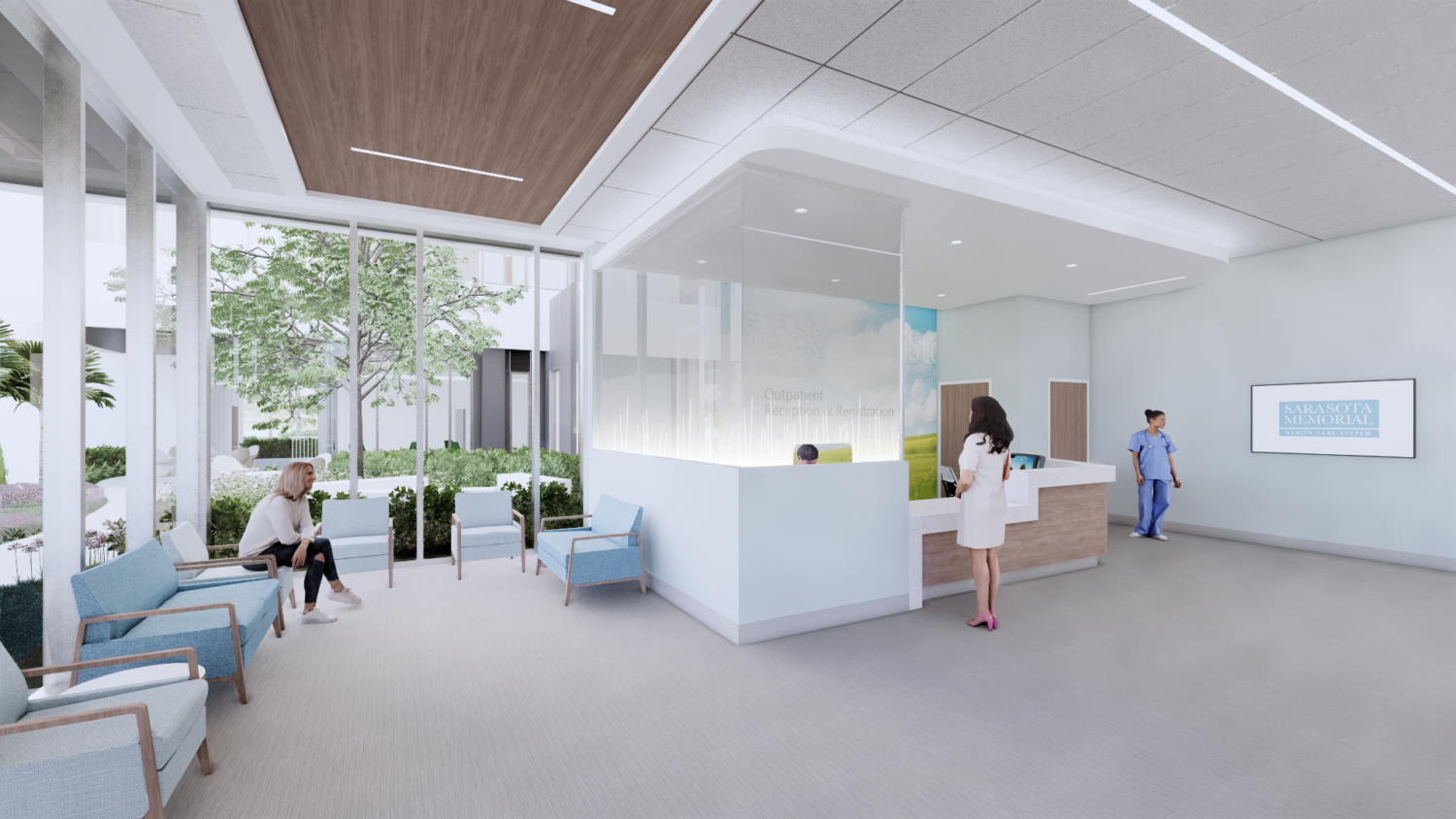
Giving Patients Choice, Dignity and Respect:
Creating a dignified environment for SMH’s intake space was also a top priority. Previously, patients were brought into a room that was noisy and had several environmental stressors that could cause agitation. While it’s a seemingly simple solution, we created a dedicated and defined intake space that includes an individual seat where a patient can sit and decompress, as well as a TV monitor that makes it easy for staff to keep an eye on the room if they can’t immediately start the intake process. The separate intake space will also improve the staff experience, making it easier to take vitals and evaluate patients.
Promoting dignity and independence, inpatient rooms allow patients who stay overnight to control the temperature in their room and open and close their blinds, and certain patient populations have access to a personal shower.
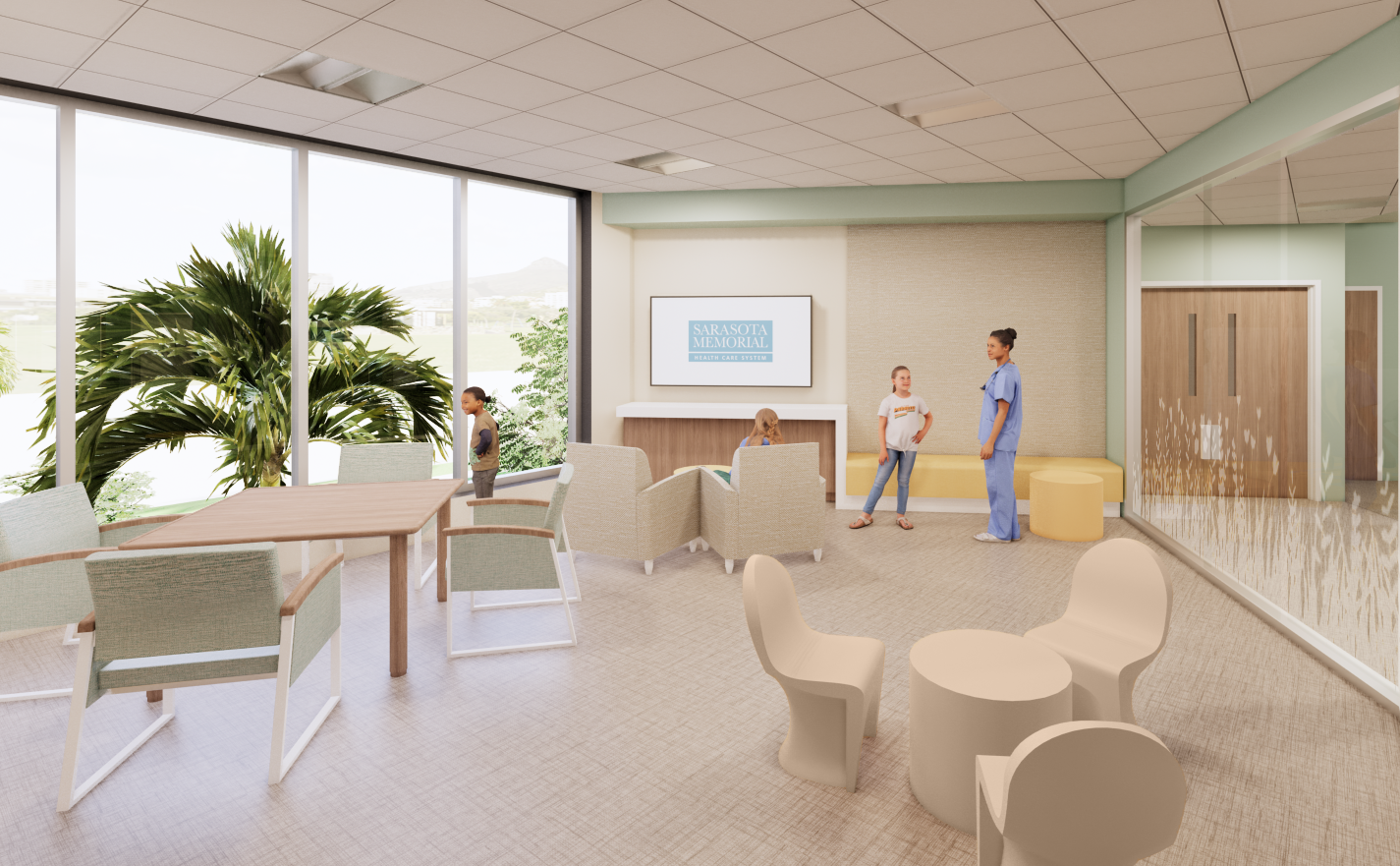
Balancing Separation and Community: Flexibility in Community Spaces
To maintain safety for patients and staff, we created a true front-of-house/back-of-house circulation, both horizontally and vertically. Access points will allow staff to reach various levels without needing to step directly into the active patient environment, giving them a much-needed “off-stage” area in which they can attend to other tasks. The unit has also been designed so non-clinical staff delivering food or materials do not have to enter a patient’s space, preventing situations that can raise patient or staff anxiety.
Slated to open in late 2023, SMH’s new 96,000-square-foot, 82-bed Behavioral Health Pavilion will provide both inpatient and outpatient care in a setting that promotes safety for both patients and staff in a compassionate, healing environment.
